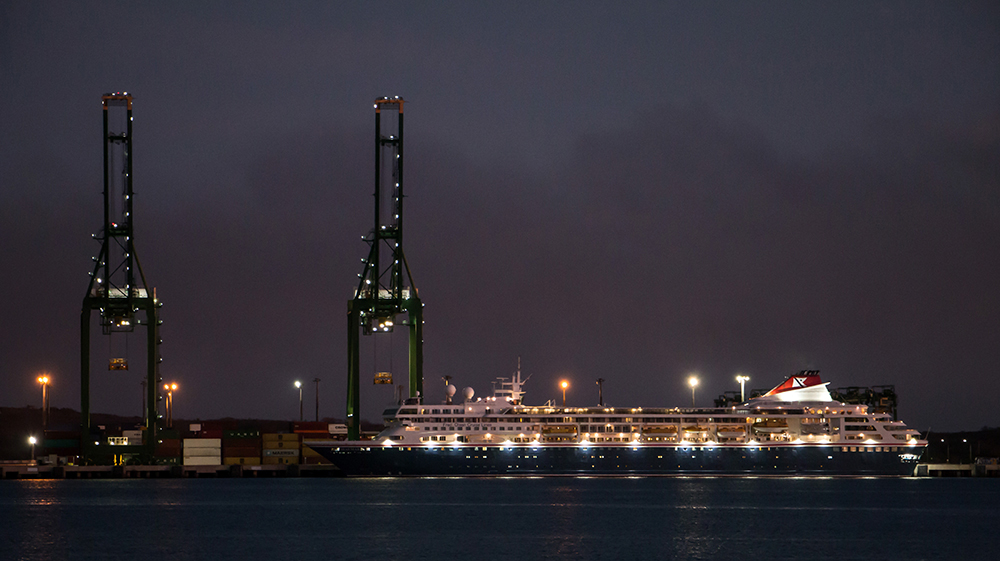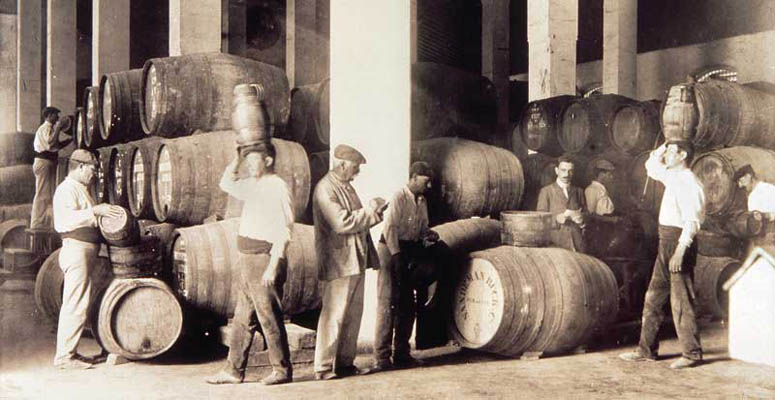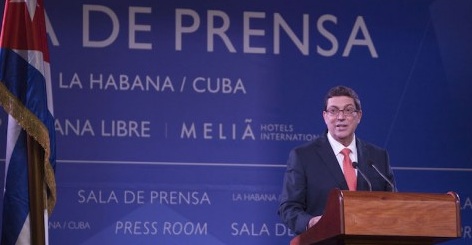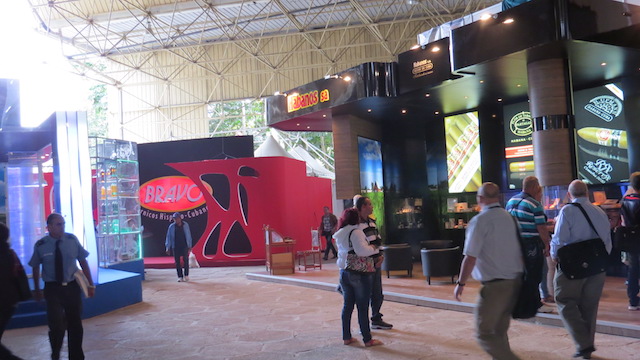
The Havana International Fair (FIHAV) held every November in Cuba is the largest general show of the year for trade between both domestic and international companies. It provides a convenient meeting point for introductions and information gathering, and includes an investment forum sponsored by the Cuban Chamber of Commerce where investors can meet face to face with directors from the sectors of greatest interest, to move that process forward.
IcarusCuba began attending FIHAV in 2014, just two months before the surprise announcement about the opening of a normalization process for diplomatic relations between the US and Cuba. US representation at FIHAV 2017 was comparable to 2014, when a few generic stands were occupied mainly by delegations from Virginia, Maryland, Alabama and Illinois, whose interests were primarily agricultural. The decline in US agricultural purchases by Cuba was already well underway by then although some of the exhibitors were still confounded about the reasons.
The reasons were not that hard to understand. For a number of years, Cuba made agricultural purchases in cash (as insisted by Congress) from particular states thought to be key in the congressional fight to normalize relations. But the support gained was insufficient to move the political needle. Cash purchases were a terrible burden for a country with an extreme liquidity problem, just as intended by the Miami congressional delegation that crafted the rule. Nobody in the modern world operates in cash. Cuban buyers turned to international suppliers offering more realistic terms.
It was always going to be impossible for American producers to compete with the regular credit offered by Brazil, and 2 years interest free credit from China, but also, starting from a market stunted by underdevelopment, Cuban purchases would never be sufficiently large to impress Washington. Larger agricultural producers like Cargill were clearly capable of seeing Cuba’s future market potential, and fully understood the importance of investment. Nevertheless, a bill that would allow for credit to be extended to Cuba through normal financial channels has still not prospered.
The financing question is clearly limited by the two countries’ failure to resolve the financial claims question, something that depends on a normalized relationship and negotiated agreement from both sides. The Trump administration’s unilateral erasure of diplomatic relations has been an unfortunate setback to that process, but these issues are beyond the scope of this report.
Liquidity, liquidity, liquidity
Cuba’s liquidity problem is a vicious circle where production is limited by the lack of hard currency and vice versa. It is a problem with long antecedents. Starting in the 1990s, the country re-opened to foreign capital, looking to resolve the problem by seeking foreign investment from around the world in exchange for shared ownership and profits. Russia, China and Brazil have responded in important ways, other countries to a lesser degree. Investment from all foreign players accelerated in 2015 when the prospect of future US competition began to seem, if not imminent, at least tangible.
Even before 2015, China and Brazil were joint investors in the modernization and upgrade of Cuba’s new super-port at Mariel on the northern coast – directly across the Gulf of Mexico from Mobile, Alabama. Mariel is now set to handle traffic from supersized Post-Panamax vessels and has been conceived as a sort of free-trade zone plus, with manufacturing, distribution and warehousing capabilities.
Much of the foreign investment sought by Cuba is directed toward this zone, clearly designed as the beating heart for a distribution system that Cuba currently lacks completely. Unilever set up a manufacturing plant there for personal care products, in a joint enterprise with a Cuban company, but there are 30 additional projects already underway and more under negotiation. France will be manufacturing solar panels, Spain will be producing metallic paint, and Brazil will dominate logistics, to name just a few. Outside the zone, China is deeply invested in Cuban telecom upgrades and Russia recently committed to a $3 billion investment that includes a complete rebuild of Cuba’s rail system. The longer the US waits to resolve its differences with Cuba, the fewer the remaining opportunities for its participation in the Cuban economy.
Embargo politics & the Miami conflict
Until now, the US political push toward normalization has concentrated on timid cracks in the embargo: credit extension and freedom to travel for US citizens. It’s a classic example of “thinking small,” and confining the argument to a Miami sandbox occupied for the last 58 years by a shrinking handful of normalization opponents. The Obama administration’s green light for airline service to Cuba and OFAC licenses for companies like Marriott and GE were important steps forward, but in the larger context Obama still worshipped at Miami’s altar, albeit the one run by Miami 2.0, rather than the previous generation.
Obama’s team viewed the emerging small businesses in Cuba – largely funded by Miami 2.0 – as a useful wedge. The State Dept. worked with a small circle of Washington travel agents to construct itineraries that focused on Miami’s favorite private Cuban entrepreneurs – over and over and over again. They also facilitated five year visas and travel expenses for these same entrepreneurs to visit the US and appear on panels about the burgeoning growth of private enterprise in Cuba. The story was misleading and incomplete, but it was enthusiastically received. The point was to use these entrepreneurs first as a sales force to convince policy makers that the embargo had failed to achieve its objectives, and second as a beachhead to achieve those objectives, one Cuban B&B at a time. Progress might be glacial but at least Obama could take credit for cracking the wall.
The Trump administration’s approach was less subtle – it adopted Obama’s approach to a certain extent but additionally, directly targeted anyone competing with old Miami, whether the competition came from Miami 2.0 or important US corporations. Fear and intimidation were the preferred weapons, because the regulatory changes were insubstantial.
The fear was wielded through allegations of “sonic attacks” for which the administration has offered no proof but which served as a pretext to unilaterally destroy diplomatic relations essential to any US business activity. A new Ice Age imposed at the Treasury Department’s Office of Foreign Assets Control (OFAC) sealed the deal.
A good demonstration of this is found in the airline sector. Until 2015, direct airline service to Cuba was controlled from Miami by poorly managed charters selling overpriced flights that operated essentially without regulatory oversight. One look at the enormous and minimally controlled sums of cash being handled at the charters’ airport counters was sufficient to raise natural questions about tax evasion and money laundering.
Obama’s opening to the major airlines destroyed this dirty monopoly overnight, but it is now seeing a resurgence. It’s a bit counterproductive for the Cuban small business beachhead envisioned by Obama, though that opening has not been totally erased. The main point is to reserve most-favored-nation trading status for Miami, old or new, with priority for the former.
Most US companies are not interested in trading with Miami however, and neither is Cuba, on the industrial scale. But if the clock has now been set back, it is not by much. The embargo was always the elephant in the room, as much under Obama as Trump. Much of the interest expressed by US executives visiting Cuba was mainly a matter of satisfying pent-up curiosity but these visits also revealed a deep – though understandable – ignorance of how a socialist business system functions, and how little US businesses could actually do in Cuba thanks to restrictions from their own government.
Fundamental misunderstandings
The fact that the US presence at FIHAV 2015 and 2016 was larger than this year’s is relatively meaningless. Even at the best of times, the tiniest nations represented at FIHAV have had a more professional presence than the United States. South Africa came to the fair for the first time this year and occupied an elegant and impressive space in the mezzanine overlooking the ragtag US section. The difference was appalling. FIHAV exhibit spaces are an important signal to the Cuban government. Spain expands its presence every year and this year occupied four entire pavilions. In 2014 it occupied two.
Beyond the problem of professional presentation, it is high time American companies grasp the reality of Cuba’s liquidity problem and move beyond the mindset of FIHAV as a display space to foster sales to Cuban buyers. Investment is the real key to doing business in Cuba, and while smaller companies are unable to participate at this level, there are still opportunities for businesses with products that can help Cuba improve its production.
The small tractors invented by the startup Cleber company were conceived and promoted with much fanfare as doing just that. They also happened to fit nicely with the plodding Obama plan to seize the Cuban beachhead one small business at a time, this time through small independent farmers. There aren’t many of those in Cuba, but an OFAC license was issued anyway, for Cleber to assemble its tractors at Mariel. But an OFAC license is meaningless inside Cuba – it’s the Cuban license that counts.
Cuba does not view Mariel as a maquilladora, or assembly hub, but as a manufacturing powerhouse for a highly skilled population. Most biotech investment – serious projects with high quality standards and pricetags – is being directed toward Mariel. Software development is another category moving that direction. Tractors for a tiny, dubious market were never part of the plan. The difference is key to understanding Cuba’s overall approach to foreign business.
The Cleber tractors supposedly will now be manufactured in Alabama, but prospects for future sales in Cuba are poor. One farmer we spoke with questioned whether the tractor could fetch $10k in the US, let alone a developing country, and pointed out the lack of basic elements like 4-wheel traction to allow for more than one plow and wider surface cultivators. Not to mention a configuration that would force a farmer to attach a heavy implement underneath the tractor, between the front and back wheels, rather than the natural arrangement of attaching and dragging it from behind with the weight of a forward engine to compensate. But in the final analysis it was mainly the conceptual, not the design flaws that doomed the project.
John Deere and Caterpillar were both mentioned at FIHAV 2017 as US companies who have concluded successful deals with Cuba. It is important to understand the nature of the deals. John Deere has signed an agreement with Cuba for the testing of its equipment in Cuba, to meet Cuba’s regulatory certification process. It is a necessary step forward but it is not the same as sales, much less manufacturing. But it is an intelligent move for the time being. Since every company that hopes to eventually do business with Cuba must pass through a feasibility study process, one step of which is regulatory certification, it makes sense to get that out of the way – particularly while more fearful US competitors are hanging back. It puts a company one step closer to market than their competitors once the embargo comes down.
As for Caterpillar, the deal was a bit more flash than substance, since it involves a Puerto Rican family-run dealership that will be setting up a distribution center at Mariel. Considering the disastrous situation in Puerto Rico, Mariel is probably a better and safer distribution point toward the rest of the Caribbean, but sales to Cuban farms are impossible at the moment, both because of the embargo and Cuba’s liquidity problem. Longer term, the chances of Caterpillar selling its high end machines to Cuba through a dealer are still low, mainly because Cuba insists on eliminating intermediaries whenever possible in order to cut costs. Caterpillar occasionally sells direct and may want to keep this in mind. Regardless, it is an important goodwill measure, because it is a tangible expression of a major US company’s interest in Cuba, and provides an example for other US companies to follow.
Cuba’s detailed approach to foreign investment
Every year at FIHAV, Cuba presents its foreign investment portfolio. It is quite expansive and relatively detailed, reminding us of a comment from former Agriculture Secretary Tom Vilsack: “The Cubans know exactly what they want.”
All of the projects in the portfolio have been closely studied to determine their feasibility and affordability, and in some cases, projections for return on investment. There are projects still on the drawing board, awaiting feasibility study completion, but Cuba is also open to additional investment ideas it has not considered. The projects included in the annual portfolio are simply the ones set for the fast-track.
Any business in Cuba will need to be undertaken with a Cuban partner, but some of the projects in the portfolio are seeking 100% foreign financing and presumably the foreign partner’s profits and ownership would be negotiable. Others are to be jointly funded.
Some of the most interesting projects in this year’s portfolio include:
Tourism
- Two waterparks, one in Havana, another in Varadero. Both are standard waterparks with lazy rivers, waterslides and other attractions. The estimated costs are $25 million each with an estimated 8 year return on investment.
- Hotel management contracts. Marriott (Starwood) does not own either of the hotels it runs in Havana – it simply has a management contract. There are scores of additional management contracts available throughout the country for other hotel properties, some with additional renovation investment possibilities, and presumably additional profits. Building opportunities have been defined as well, with higher price tags, naturally. Detailed analysis is available for each project, including occupancy rates and expected financial returns.
- A combination shopping mall/conference center in the center of the Varadero peninsula, probably Cuba’s biggest tourist draw in terms of sheer numbers, is greatly in need of restoration and the estimated cost is relatively low: $4 million, with an estimated recovery period of three years.
Pharmaceuticals
All pharmaceutical & biotech investment projects are slated for buildout at Mariel, currently and senselessly off limits to American companies who would need OFAC license exceptions in order to operate there. These include:
- Production of vaccines for cancer treatment: $60 million
- Production of therapeutic antibodies: $75 million
- Production of cephalosprines, injectable carbapenemas and oral penicillin: $120 million
- Production of cytostatics: $60 million
- Production of oral contraceptives and hormones: $25 million
- Joint enterprise dedicated to certification and validation of clean & sterile rooms for biopharma, hospitals and laboratories: $20 million
Telecom
Cuba views telecom as strategic, so much of this sector is off limits, however there are investment opportunities for software development, scientific/tech centers, tech support and call centers, as well as international certification.
Postal services are grouped within this sector and investment is badly needed to update (or actually, introduce) technologies for the processing of domestic and international mail and packages, express messenger services and postal graphics.
Mining
Nickel in Cuba is largely dominated by Canada and China, but there are a wealth of other mineral possibilities. Cuba has studied and identified five regions in addition to the Isle of Youth, and has identified 45 projects for prospecting/exploration. The minerals include gold, silver, copper, lead, zinc and chrome. There are another eight prospects for wolfram and technical minerals like mica and kaoline. Cuba is looking to sign 5-year International Economic Partnerships for risk exploration, at which point the foreign partner could move on to a Joint Enterprise agreement, or not. The minerals are intended primarily for foreign export, with acquisition priority granted to the investor.
Agriculture
Cuba is still looking to develop its agriculture on almost every conceivable level, from aquaculture to dairy products. Plants to produce pasta, sauces, dressings, cereals, fruit juices, spices and condiments will all be fast tracked, and with the exception of relatively expensive wheat milling and soy processing plants, the costs are much more affordable, in the $5 to $20 million range.
Overcoming the trap of negative thinking
Moving forward, we believe that US companies and legislators should not capitulate to defeatist attitudes. They should insist on viewing Cuba as an opportunity, not a problem, and continue their legal travel to Cuba to learn where they fit in, or don’t – even if the US Embassy is unable to meet with them due to short staffing. We’re quite sure that when push comes to shove, staff will be found, but if not, Cuban managers are not in short supply. A business visa can still be obtained from this side of the water (Havana), and foreign business visits are important to demonstrate that fear and intimidation will not force the horse back into the barn.
Purely on a business level, a regulatory freeze opens the possibility of a calmer environment that allows US companies with foresight to move ahead of their more fearful competitors by completing their market research and ticking off the unglamorous requirements in the Cuban process, as demonstrated by John Deere. While it is true that OFAC will for the moment not be granting the kinds of licenses that were granted to Marriott and GE, an OFAC license is not a magic panacea. The embargo is still the real problem, and no president can change that. In the meantime it’s important not to ignore the possibility of getting other ducks in a row, and one of those is certification, another is market research.
For that, businesses should keep in mind that truly useful fact finding missions are not the ones promoted by tour operators selling the chance to make “valuable contacts” for the future. Not only are those contacts constantly changing, business approval in Cuba is never a matter of convincing one or two highly placed people. (Beware the consultant who claims some personal connection to Miguel Diaz Canel.) The Cuban system doesn’t work that way. It’s collective, not individual, and business is no exception. Decisions start at the ground level, through committees, before traveling higher up the food chain.
The great informational divide
Information is always a challenge to obtain in Cuba, even for consultants who are based here. Probably the most damaging thing about the terrible US/Cuban relationship is the lack of trust, on both sides. This presents particular problems when it comes to moving beyond the thin layer of information offered in the Ministry of Foreign Investment’s glossy portfolio.
As he presented that portfolio this year, Foreign Investment Minister Rodrigo Malmierca spoke openly of Cuba’s need to improve its efficiency in the investment approval process and we heartily agree, but the problem is greater than that. Consideration should be given to senseless barricades that exist from the outset, especially in non-strategic sectors. Investors and their representatives cannot eternally be dealt with on an eyes-only basis, where simple questions are only answered once the investor obtains a business visa and touches Cuban soil. It’s the equivalent of demanding that a potential investor obtain a marriage license and a honeymoon suite for a first date. It wastes resources and generates ill-will; two luxuries that Cuba can ill afford.
For now, ordinary information gathering is a matter of patience and persistence. It’s critical to have someone on the ground who is skilled at breaking through artificial barriers – a deep understanding of Cuban culture is essential for the task.
Many people in Miami have a deep understanding of Cuban culture, but it’s important not to conflate Miami and Havana. Miami’s view of Cuba is predominantly negative, whether it comes from the old guard, eternally resentful about their losses, or the new guard who doesn’t have the same axe to grind but still starts from the premise that Cuba would be so much better if it was just a little more like the United States. This is particularly unhelpful when it comes to business, which demands a more objective focus, and it’s absolutely disastrous when it comes to honest, unbiased market research.
We recommend that both businesses and policy makers get out of the sandbox. Havana is the gateway to Cuba, not Miami. We urge clients to seek assistance from people who grasp that: people with a sincere interest in seeing both sides prosper, without impositions or preconditions.
The recent setbacks in relations are real, but they are temporary. They ought not to be granted more importance than they deserve.
A version of this article was published previously at Cuba Business Report


















